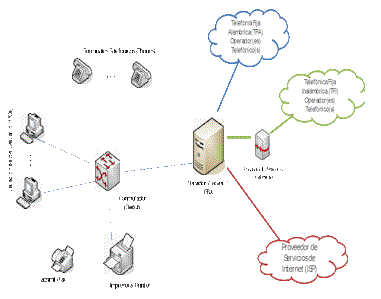|
The Government of Venezuela, through its National
Telecommunication Commission, continues to develop and evaluate its
“Access Points” (Telecenters) project; these telecenters provide
telecommunication services and facilitate access to information and
the use of computer resources with a social and collective integration
vision. The telecenters are designed to promote inclusion and access
of citizens to communication, information, and training. Access points
are aimed at:
-
Promoting the use of information and
communication technologies as development empowerment tools.
-
Meeting the needs of the communities and
supporting the activities being developed for the population.
-
Extending telecommunication service networks to
unattended areas so that they can be affordable.
-
Promoting the delivery of other services, such as
fax, scanning, etc.
To achieve the above-mentioned objectives, various
platforms are being assessed and some solutions have been adopted to
guarantee:
-
Low initial investment in the telecommunication
and computer platform for the development of the telecenter.
-
Sustainability of the telecenter over time.
Description of the proposal
The telecenter’s technological platform makes it
possible to integrate the various types of teleservices into one
single network (multiservice network). In this network solution, a
packet switching infrastructure (IP) is used to enable voice
transmission. This proposal offers many advantages among which the
following are noteworthy:
-
Optimization of broadband needed for
connectivity.
-
Simplification of technology, integrating into
one single network the services that previously required separate
networks.
-
Scalability and modularity at a reasonable cost,
making it possible to progressively increase the number of phone and
data terminals.
The general topology and equipment comprising the
technological platform for the development of sustainable telecenters
are indicated below.

Figure 1. Technological platform for the telecenters
Computer resources
The operating system and applications in each one
of the telecenter’s computer equipment rely on “free software”,
because it is a viable, economically sustainable and socially fair
alternative.
For the administration and control of telecenter
services and resources, the National Telecommunications Commission has
developed a system called the “Integral Management System,” and one of
the main virtues of this system is that it can be adapted to any
language by the translation of a language file. This system has also
been developed on the basis of the “free software” philosophy.
Telecommunications solution
The telecenter network solution uses a packet
switching infrastructure instead of the traditional circuit switching
infrastructure. The internal solution of the telecenter for phone
service is based on Voice over IP (VoIP), which uses an SIP as a
signaling protocol between IP phones and the call processing device.
The Phone Call Processing is done by the telecenter
service; this server has an Asterisk software installed, emulating a
PBX switchboard and a hardware (FXO cards) enabling connection with
phone service providers. The Asterisk PBX software using free software
generates the useful data (Call Detail Record—CDR) of the phones over
real time; these data are used by a telecenter and management system
for the corresponding tariff-setting.
With the suitable hardware, use of the Asterisk PBX
switchboard makes it possible to have a wide range of external
solutions at affordable costs to provide phone service inside the
telecenter. Examples of these external solutions are as follows:
-
The telecenter can be served by traditional phone
lines (wireless fixed telephony), which can be connected to the
server through FXS-type cards.
-
The telecenter can be served by wireless phone
lines (wireless fixed telephony), which by means of telephone
gateways (based on CDMA, GSM, etc.) can be connected to the server
through FXS-type cards.
-
The telecenter can also be served through an IP
link to connect the PBX switchboard with a softswitch or gatekeeper
of the phone service provider.
For access to Internet, any type of connectivity
solution available in the area where the telecenter is or shall be
installed can be used. To enhance the experience of user navigation on
Internet, a proxy-cache service has been installed in the server,
enabling the efficient management of the use of the telecenter’s
Internet access transmission rate.
Benefits of the Solution
-
Economic sustainability, thanks to the wide
variety of connectivity solutions for telephony and Internet, with
which the technology platform can operate.
-
Low initial investment owing to:
-
Software license payment is not required.
-
Minimum technical requirements of the equipment
(cutting edge equipment is not required).
-
The purchase of a specialized solution for the
processing and tariff-setting of the calls in the telecenter is
not required, because it uses the Asterisk software as PBX
switchboard and the integral management system as an application
for the setting of service tariffs.
- Promotes technological independence.
CONATEL-Venezuela
|
Additional Information:
Document published as
CCP.I-TEL/doc. 1081/07 cor.1.
|
|

